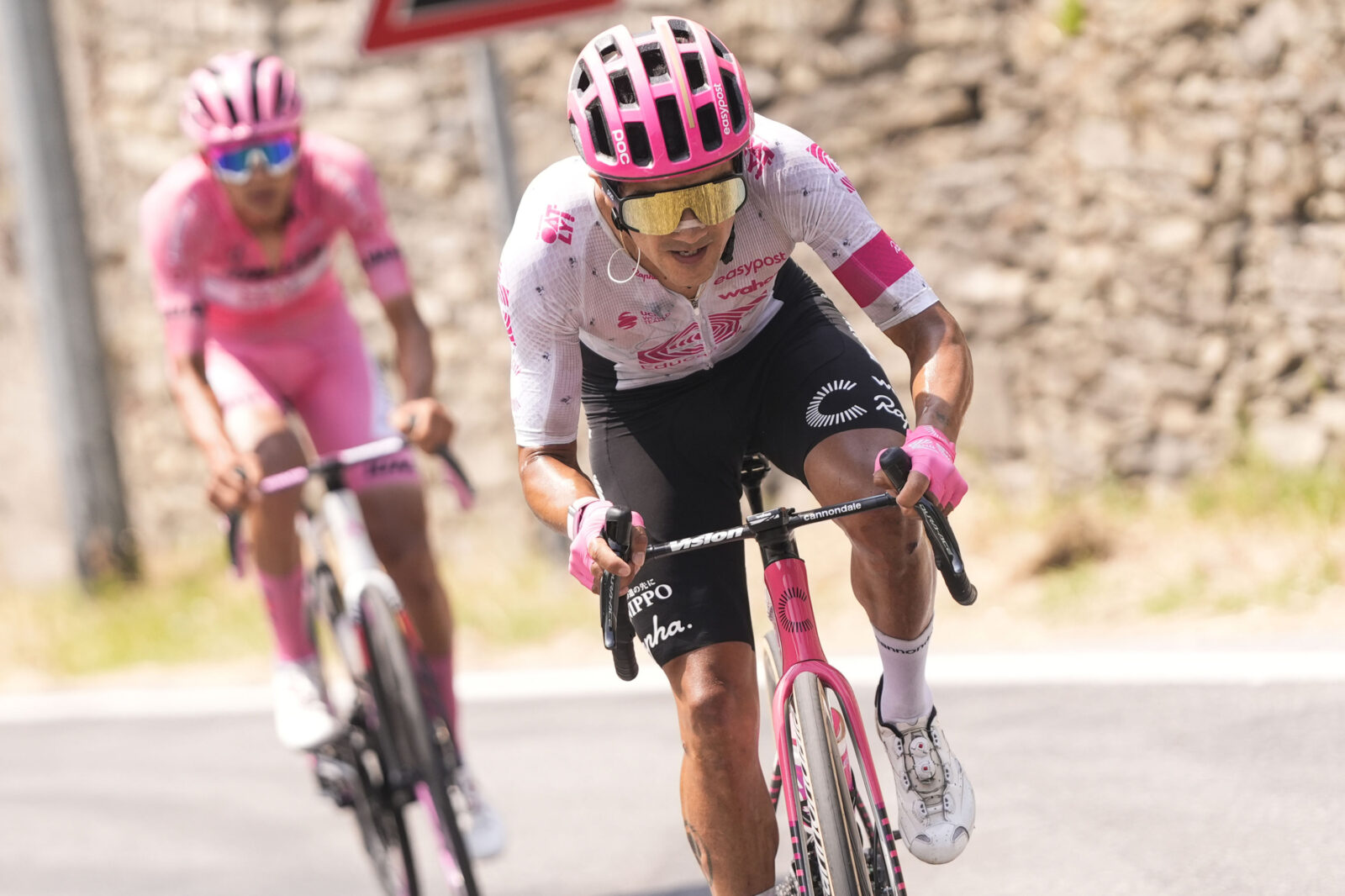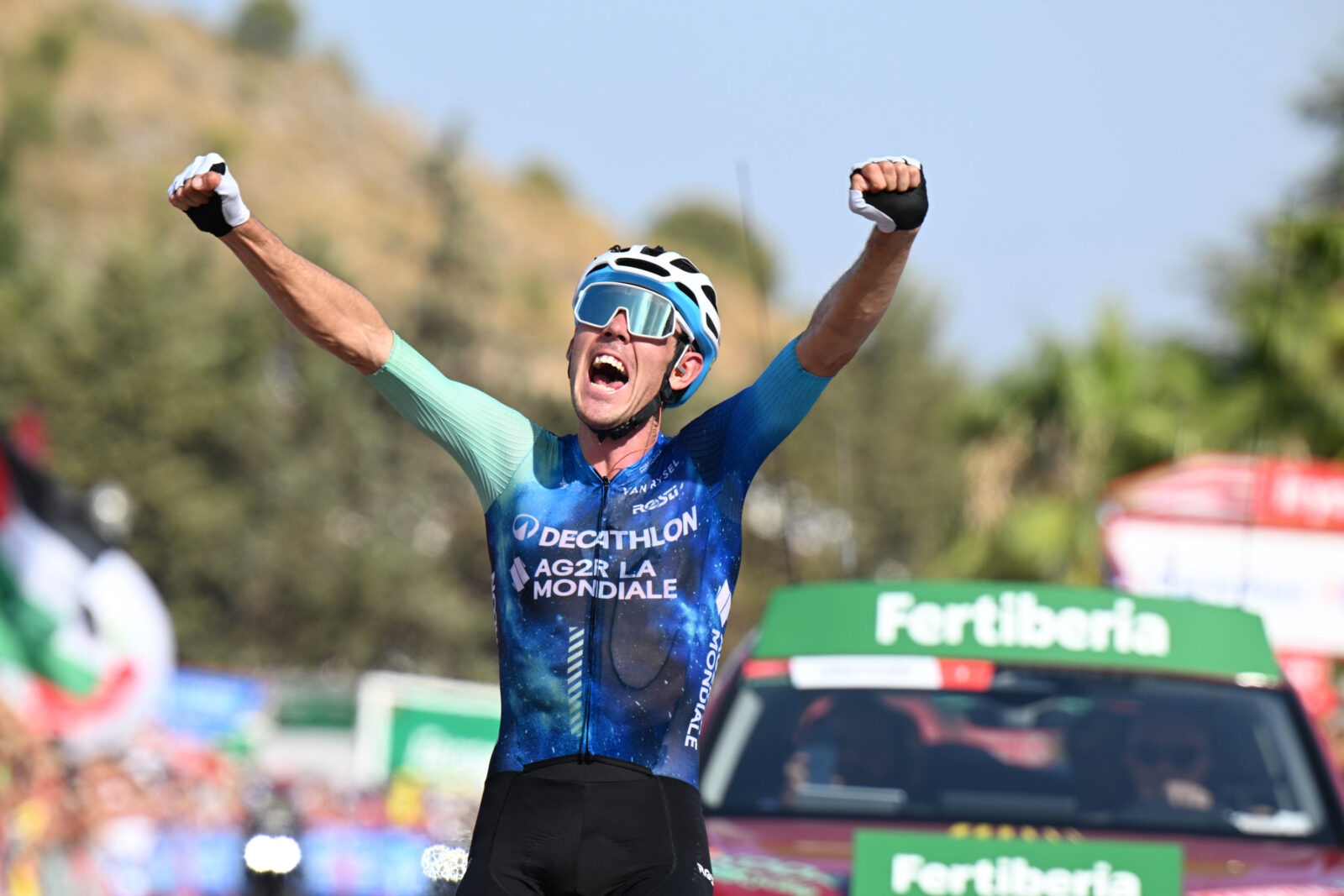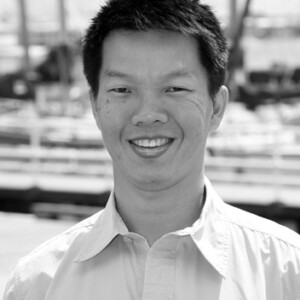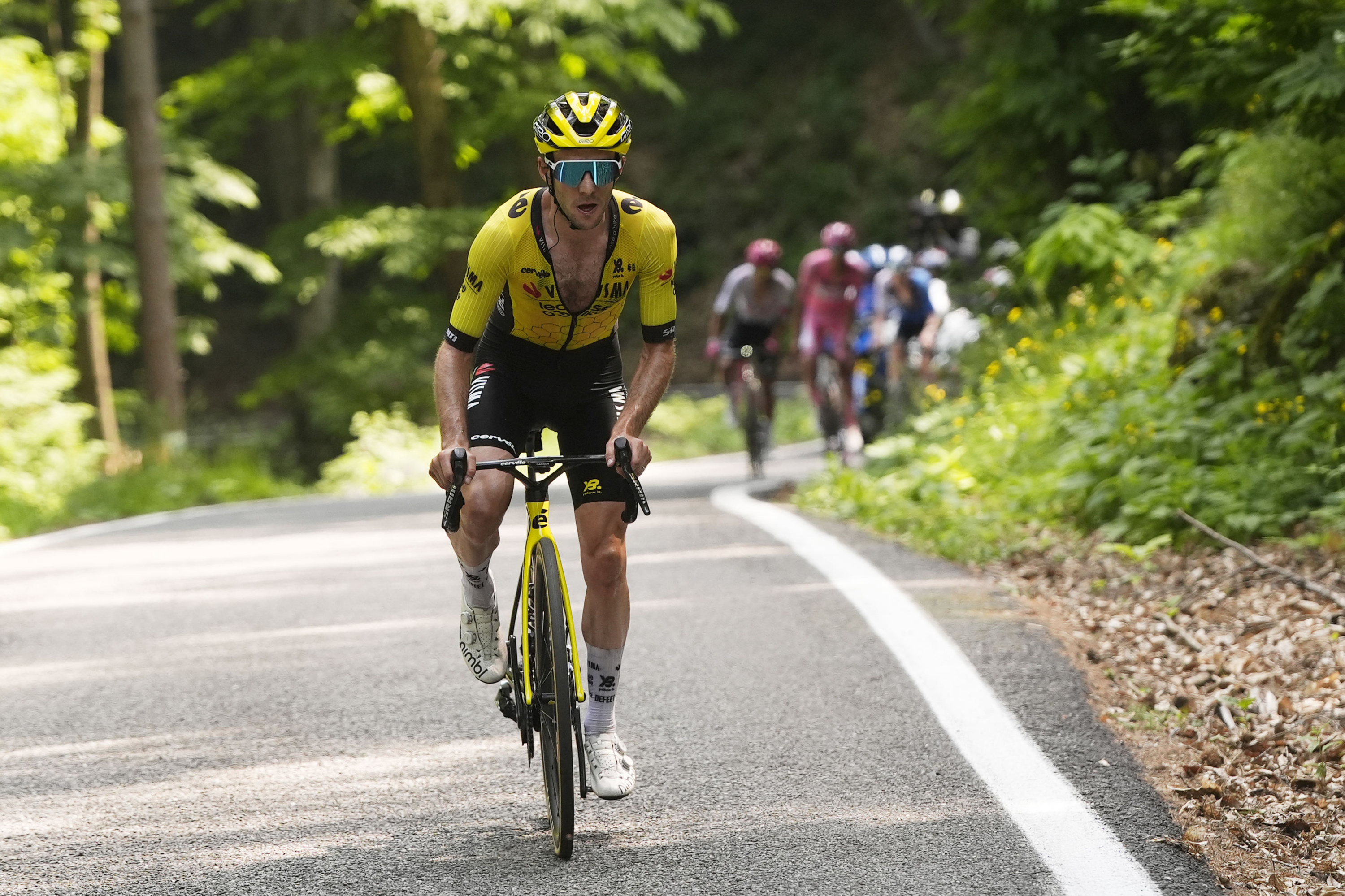The Giro proved that you don’t need the best riders to have the best Grand Tour in years. It could also happen at La Vuelta (23 August to 14 September 2025). But, writes Anthony Tan, how do we get more people to watch?
Four months on, I find myself still thinking about the 108th edition of La Corsa Rosa and what a humdinger it was.
Prior to the start in Albania on May 9, there were no less than 10 bona fide contenders vying for the maglia rosa – compare this with the Tour de France, which, for the past six editions, has been a two-horse race. (n.b. I’m penning this Spin Cycle before Le Tour has even begun, but crashes aside, it’s going to be either Tadej Pogačar or Jonas Vingegaard for the win, right?)
In the final week, after five changes of leadership and just when we thought it was down to two men, wildcard Simon Yates of Team Visma-Lease a Bike – thanks to a record-breaking ride on the Colle delle Finestre – steals the show on the penultimate stage and wins the whole kit and caboodle… Booyah!

In the last decade, this isn’t the first time it has happened at the Giro. In fact, it’s the seventh occasion the lead has changed in the final two days.
In 2016, a cunning Vincenzo Nibali snared the lead from Esteban Chaves on Stage 20. A year later, Tom Dumoulin stole the show from Nairo Quintana on Stage 21. In 2018, Chris Froome launched an 80 kilometre solo attack on Stage 19 to claim pink from Simon Yates. Two years on, Tao Geoghegan Hart broke the hearts of Australian cycling fans by taking pink from Jai Hindley on the final day TT.
Hindley got his redemption at the ‘22 Giro, dropping 2019 winner Richard Carapaz on the penultimate stage and this time holding onto the maglia rosa for good. A year on, again on Stage 20, Primož Roglič would turn the tables on 2018 Tour de France champ Geraint Thomas in a mountain time trial and triumph by 14 seconds.
When Pogačar decided to race the Giro in 2024, what happened?
He took the lead on Stage 2 and won by 10 minutes.
The Pog bad for business?
“To me, a very dominant rider like Pogačar, it’s fascinating to watch, but from the business perspective, it’s essentially hurting the sport,” Jonathan Vaughters, EF Education-EasyPost founder and CEO, told journalist Lionel Birnie in an interview on The Cycling Podcast in June this year. It was the most thought-provoking listen on pro cycling I’ve heard in yonks.
“(The current system) boosts one team and one athlete. But the overall numbers in the sport start to drop off, and then the ability of mid-market teams, lower-market teams, to get sponsorship declines.”
When Vaughters talks about “the system”, he’s referring to a situation where overall budget or salary caps do not exist. In professional cycling, as far as I know, they never have. So teams like Pogačar’s UAE Team Emirates XRG and Vingegaard’s Team Visma-Lease a Bike not only have the best leaders but the best riders to support them. In the top three WorldTeams, a number of support riders would be outright leaders in those mid-market teams Vaughters referred to: “UAE (Team Emirates) is the most well-funded team in the world – by a large margin. Their Giro roster alone cost more than my entire roster,” says the former professional, once a team-mate of Lance Armstrong.
“In the US you have the NFL (National Football League), the best and longest-standing example of a sport that has a hard salary cap. And you compare that to Major League Baseball, which does not have a hard salary cap, and they sort of have dynasty teams. The New York Yankees (for example) are always going to be good; they have 10x the budget of some of the other teams. They may not win the World Series every year but they’re always going to be one of the best teams, right?
“In the NFL you don’t have that. No matter how great a team you are, eventually it’s going to get overturned. One, they have hard salary caps; two, the recruitment (process): the draft is such that the worst team gets the first pick of the college players. So, they’ve created this system where no one can be dominant.
“You ask yourself, ‘Why did the NFL owners do that?’ (The answer is that) audience growth depends on the NFL being exciting, being unpredictable – and that anyone can win.”
Vaughters likens the New York Yankees to UAE Team Emirates. “When you alienate the other teams, the audience is like, ‘My team doesn’t even stand a chance… Why do I care?’”

When plans come unstuck…
So, how was it possible for UAE to be beaten at the Giro this year with their Mexican rider Isaac del Toro, who led the race from Stage 9 to 19?
Well, for starters, the absence of both Pogačar and Vingegaard changes the dynamic completely. It was raced like the 18 WorldTeams were on salary caps, because they did not send their very best riders and very best line-ups.
Del Toro, a second-year WorldTour professional with just one Grand Tour under his belt, was one of three potential leaders on UAE Team Emirates (Juan Ayuso and Adam Yates were the other two). Without Pogačar, when Simon Yates launched his stage- and race-winning move on the Finestre, it seemed no one on UAE knew what to do, exactly.
Says Vaughters, whose rider Carapaz was currently lying second overall and momentarily gave chase before realising del Toro wouldn’t cooperate and thus stopped too: “They got put in a situation they haven’t been put in, in years… that there’s this uncomfortable absence of ability to just crush the race. When Pogačar’s in the race and they’re doing the same mountain terrain in the Tour de France, it’s almost unassailable, right?
“We played it to win – and didn’t – and (UAE) were playing a game of chicken with us. Essentially, (they thought) ‘We think you value the second place enough that you’re going to help us.’ And the problem was, we don’t.
“You play to win. You don’t race a race to finish second.”
And that’s how the most exciting Grand Tour in years was won – and lost.

Playing to win
We could get a similar situation at the Vuelta.
In the last ten years, eleventh-hour reversals of fortune have been less common in the season’s final Grand Tour. However, the 2020 edition came down to a winning margin of just 24 seconds between four-time winner Roglič and Carapaz; and in 2023 three riders on the one team all had a shot at glory, before it was decided internally that American Sepp Kuss would prevail in Madrid, 17 seconds separating he and team-mate Vingegaard.
Last year’s race almost played out like Aesop’s Fable The Tortoise and the Hare, when West Australian Ben O’Connor stole a march on Stage 6, gaining almost five minutes on Roglič and taking the race lead. The then 34-year-old Slovenian used all his race wisdom to methodically chip away time till he broke the camel’s back three days from the finish. Nonetheless, O’Connor’s second place became the catalyst for a move to Jayco-AlUla and to lead the team at Le Tour.
My belief is that any GC rider not on UAE Team Emirates will be buoyed by what they saw at the Giro; when Pogačar is not there, they can play to win.
“All of a sudden, the racing is nuanced and very tactical, and it plays out in extremely confusing ways. And that’s really fun if you understand what’s going on,” says Vaughters.
“At least on our team, if we were ever put in that position again we would race to win, not to defend second – Tour de France or not.”
UCI WorldTour: “There is no design”
While the Giro and Vuelta often offer aficionados something more compelling than a two-horse race, the biggest hurdle for pro cycling is not salary caps but a lack of relevance and logical continuity to the race calendar, as I touched on in the May-June issue of Bicycling Australia (titled ‘The Netflix Effect’).
“Strictly speaking, with a company interested in their advertising dollars being spent efficiently,” says Vaughters, “unfortunately, the Tour de France just overshadows everything by huge margins.
“Our performance at the Giro, with two stage wins and a podium in the GC, probably equates to a stage win – like a mountain stage win – in the Tour. They’re pretty close.”
Logically, then, as the least-watched three-week race, the Vuelta should be the first Grand Tour off the rank, followed by the Giro and then the Tour. As for the other 33 events on the WorldTour calendar, as in F1, the races should somehow relate to each other by way of a points system to determine the best rider and team at season’s end – and, importantly, unlike the situation now with multiple conflicts of sporting interest, one should not overlap another.
“At the end of the year, you have a world champion and a team that’s the best in the world, and it’s very understandable, right?”
From a commercial standpoint – and that’s the prism through which the UCI, race organisers and teams should be looking at things – professional cycling should operate as one series. “It’s not that it’s been designed poorly. It’s that it hasn’t been designed. There is no design,” Vaughters laments.
“It’s just things have been thrown together over 100 years,” he says, adding that, “Cycling has grown organically and not strategically.”
“If you look at successful sports, again, go back to the NFL: that is one business. The teams are franchises of that business, but the NFL is one business. There is nothing like that in cycling, and it hurts the sport immensely.”


Anthony Tan
Anthony Tan - One of Bicycling Australia’s longest-serving columnists, ‘Tan Man’ has a deep passion for the sport and is a natural communicator.


